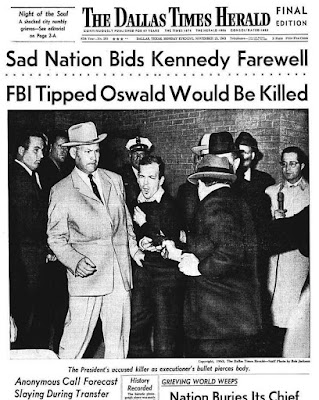Top Synchromystics of the Year 2019
by Loren Coleman, author Mysterious America (1983, 2006),
Last year, the Top Synchromystics of the Year 2018 were named as Jim Brandon and Alex Fulton. This year, in a bit of balancing, we note the work of the other cryptokubrologist, who completes the cryptokubology team with Alex Fulton. And look to the output of two others from the world of sync, numbers, and cryptokubrology. Congratulations to Shawn Montgomery, Sibyl Hunter, and Andrew Griffin.
Shawn Montgomery may belong to this cat.
The double-Jupiter symbol is the logo for "shawnfella" on YouTube.
Born at 2:37 PM on a day when Pluto was in Virgo (sometime between 1957 and 1971), Robert Shawn Montgomery (who goes by his middle name) has spent a lifetime quietly, effectively immersed in the esoteric. He studied music and electronics in various schools, for just long enough to learn that he and school didn’t exactly get along - too boring. For much of his life he was a rock musician, but as we all know, that can only get one so far. For a while he worked as a translation technician and, as such, spent time on every Native and Inuit reserve in Canada (they have a name for him up there, like in Dances With Wolves).
In 2003, after years of globetrotting research, Shawn made a documentary about Royal Rife’s suppressed cure for cancer—The Rise and Fall of a Scientific Genius: The Forgotten Story of Royal Raymond Rife—narrated by Jeff Rense (still available on DVD at zerozerotwo.org). The film opened professional doors, which led to his becoming a researcher for some heavyweight authors in the arcane sciences (such as Rand Flem-Ath). For a while he worked at the McLuhan Coach House Institute at U of T, where he did some, quote, “serious shit.”
After closing his investigation on Royal Rife, it was around the time of the Financial Crisis that Shawn’s purview expanded to include media studies and another technical wizard: Stanley Kubrick. Following a few years of investigation, he published the “Subliminal Bears” video series, which posited the fantastic claim that Kubrick deliberately embedded, or perhaps was simply already aware of, well… subliminal bears in the mise-en-scéne of his films (as well as on film posters, album covers, and most other objets de média): the sort of dynamite notion that makes even the most seasoned of occult Kubrick researchers sweat and scan the room for the nearest exit. Soon after came “The Shone Report,” a video identifying a certain sound, suspiciously similar to Shawn's own name, on the ambient soundtrack of The Shining, which to date has racked up well over 237,000 views.
Montgomery biographical sketch by Alex Fulton.
<><><>
Sibyl Hunter
Sibyl Hunter is an American sync enthusiast who seeks out meaningful memes and synchromystic coincidences. Her postings are contemporary, current, personal, and highly visual. Her blogs, since 2010, include "the mask of god" and "The Libyan Sibyl," as well as frequent comments on sites such as Facebook's The Kitchen Sync and The Sync Book.
Sibyl Hunter is one of the contributors of The Sync Book (Book One, 2011).
Hunter writes about and relates to her own personal relationship to the number 4, and thus uses the logo "44" to denote herself.
Hunter's sketchy bio is compiled from the bread crumbs she has left across the inter web.
<><><>
Andrew W. Griffin
Andrew Griffin, owner Red Dirt Report, speaks as the ACLU announces a lawsuit over Oklahoma City's panhandling ordinance at city hall on April 13, 2016 in Oklahoma City, Okla. Photo by Steve Sisney, The Oklahoman.
The lapel pin Griffin is wearing is from the International Brigade Memorial Trust. The red hat and white star with "46" on it is of the original state flag of Oklahoma (see here).
Griffin has been a journalist for over fifteen years covering everything from the court/police beat to the arts and entertainment. After stints at newspapers in Arkansas and Alabama, Griffin went to work at the Waxahachie Daily Light. in Texas and then moved on to The Town Talk newspaper in Alexandria, Louisiana. In 2005, Griffin moved to Oklahoma to work at The Lawton Constitution covering the court/police and sports beats.
In 2006, Griffin re-located to the Oklahoma City metro area where some months later he launched the Oklahoma online newspaper Red Dirt Report (www.reddirtreport.com) and continued working as a freelance reporter covering everything from politics to music.
Additionally, Griffin is a regular contributor to The Current, an entertainment paper out of Tahlequah, Oklahoma; The Moore American; and The Norman Transcript.
Griffin has also written for other publications including the Birmingham Weekly, Distinctly Oklahoma, Edmond Outlook, Texas Music Times and Best in Texas as well as online publications including CountryStandardTime.com, PopMatters.com, and Tollbooth.org. He has also done interviews with Oklahoma City's News 9 program "The Hot Seat," he has appeared several times on Paul Preston's Agenda 21 Radio Show in California. Additionally, Griffin has appeared on Free Mind Report and a number of Internet podcasts talking about everything from music to politics. A member of the Oklahoma Press Association, also he appears regularly as a guest on The Scott Mitchell Show on the Radio Oklahoma Network.
Griffin devotes much of his time working on investigative pieces – stories that the state media is not thoroughly covering, as well as national interactions of the cryptokubrological kind. He also enjoys covering music and entertainment stories.
Griffin’s first book was published in 2017, entitled 1966: Sowing the Seeds of the Summer of Love.
Andrew Griffin is working on his next title, about the sychromystic and Fortean intrigue he’s discovered along a certain highway in the Southwest.
Past Synchromystics of the Year
"Synchromysticism: The art of realizing meaningful coincidence in the seemingly mundane with mystical or esoteric significance." ~ Jake Kotze, The Brave New World Order, August 18, 2006.



















































